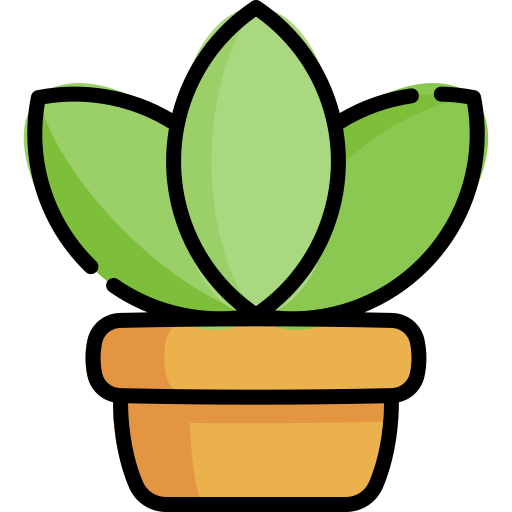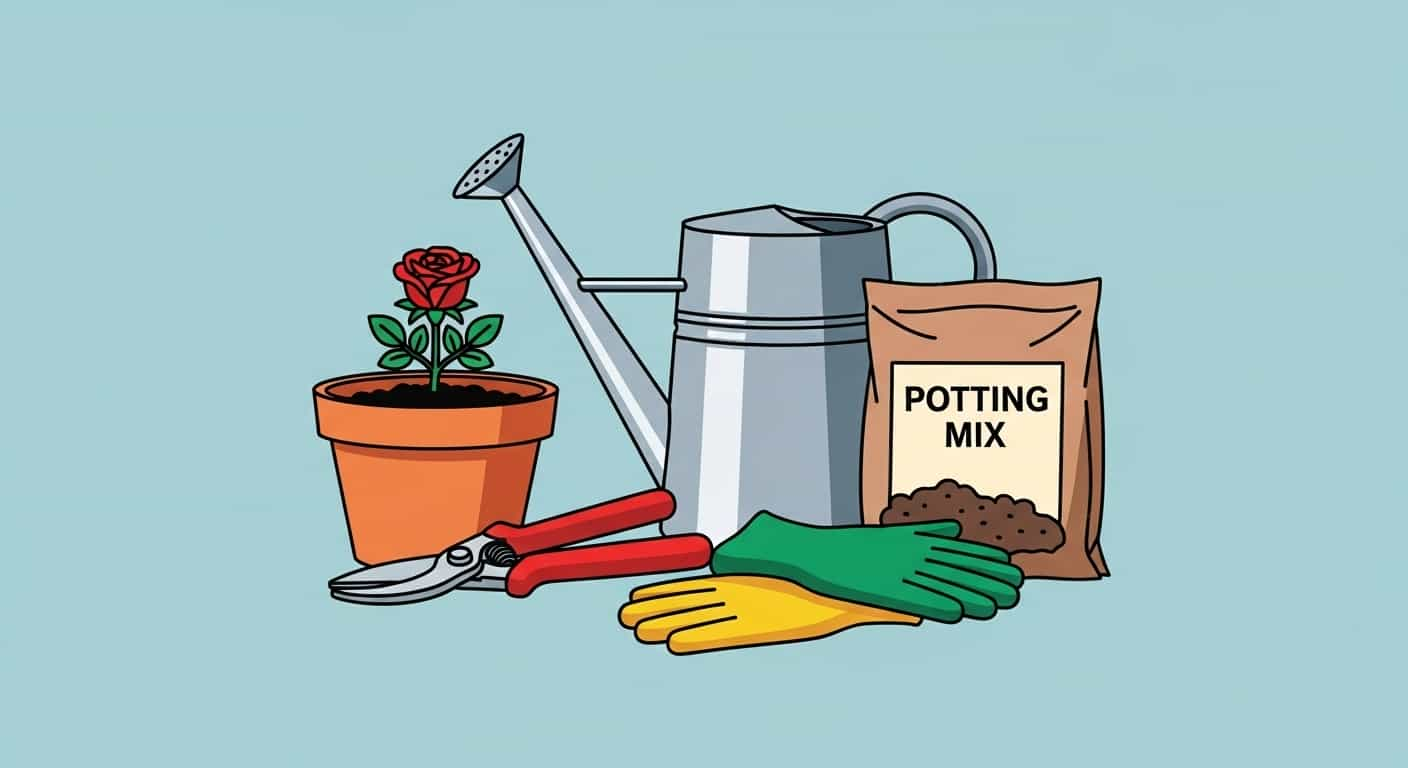Embarking on the journey of growing roses indoors is an exciting venture. You’ve chosen the perfect, compact variety, and you can already picture the beautiful blooms brightening your home. But before you can bring that vision to life, it’s essential to gather the right toolkit. Just like a chef needs sharp knives and quality pans, an indoor gardener needs the proper tools and materials to create a thriving environment for their plants. Setting yourself up with the right equipment from the start not only makes the process easier but also significantly increases your chances of success.
This guide will serve as your ultimate shopping list for creating a successful indoor rose garden. We’ll dive deep into each essential item, explaining its purpose, what to look for when buying, and why quality matters. From the perfect pot to the science of potting mix, you’ll learn how to assemble a complete system that provides your rose with everything it needs to flourish. Think of this as building the perfect home for your new plant, ensuring it has a solid foundation for a long, beautiful life.
The Foundation: Pots and Soil
The container and the soil within it form the core of your rose’s world. This is where its roots will live, draw water, and find nutrients. Making the right choices here is fundamental to your plant’s health.
Choosing the Perfect Container
A pot is more than just a decorative holder; it’s a crucial part of your plant’s life support system. The right container provides stability, proper drainage, and adequate room for root growth.
1. Drainage is Non-Negotiable: If you take away only one piece of advice, let it be this: your pot must have drainage holes. Roses, like most plants, are susceptible to root rot, a fatal condition caused by roots sitting in waterlogged soil. Without an escape route for excess water, the soil becomes saturated, suffocating the roots. No matter how beautiful a pot is, if it doesn’t have holes, it’s not a planter—it’s a decorative cachepot. You can use such pots as an outer sleeve, placing a functional plastic pot with drainage inside it.
2. Size Matters: The pot needs to be proportional to the rose. A container that’s too small will cramp the roots, causing the plant to become root-bound quickly and stunting its growth. An excessively large pot can hold too much moisture, increasing the risk of root rot because the small root system can’t absorb the water fast enough.
- For Miniature Roses (6-18 inches tall): Start with a pot that is 6-8 inches in diameter.
- For Polyanthas or Small Floribundas (2-3 feet tall): A pot that is 10-12 inches in diameter or larger (around 3-5 gallons) is a better starting point.
As your rose grows, you will need to “pot up” to a larger container every 1-2 years. Choose a new pot that is just 2-3 inches wider in diameter than the current one.
3. Material Choices:
- Terracotta (Clay): This is a classic and highly recommended choice. Terracotta is porous, meaning it allows air and water to pass through the walls of the pot. This “breathes,” helping the soil to dry out more evenly and providing oxygen to the roots. The main downside is that it dries out faster, so you’ll need to water more frequently.
- Plastic: Lightweight, inexpensive, and available in many colors, plastic pots are a great option. They retain moisture longer than terracotta, which can be an advantage if you tend to forget to water. Just be extra vigilant about checking the soil moisture to avoid overwatering.
- Glazed Ceramic: These pots offer beautiful designs and colors. Like plastic, they are non-porous and retain water. They can be quite heavy, which provides good stability for larger plants. Ensure they have a large drainage hole.
The Right Potting Mix
Never use soil from your garden for indoor plants. Garden soil is heavy, compacts easily in a pot, drains poorly, and can introduce pests, weeds, and diseases into your home. You need a sterile, specially formulated potting mix.
A high-quality potting mix is engineered to provide the perfect balance of aeration, moisture retention, and structure for container-grown plants. Look for a mix that contains the following ingredients:
- Peat Moss or Coco Coir: This is the base of most potting mixes. It’s excellent at holding water and nutrients, but can become compacted on its own.
- Perlite or Pumice: These are the small, white, lightweight volcanic rocks you see in potting soil. They are crucial for creating air pockets in the soil, ensuring good drainage, and allowing roots to breathe.
- Vermiculite: This mineral helps retain both water and nutrients, releasing them to the plant as needed.
- Composted Bark Fines: These provide structure and bulk to the mix, preventing compaction over time.
You can often find potting mixes specifically labeled for “roses” or “containers,” which are excellent choices. Alternatively, a general-purpose, high-quality “potting mix” will work perfectly. Avoid anything labeled “potting soil” or “garden soil,” as these are often heavier and less suitable for indoor containers.
Watering and Feeding Essentials
Once planted, your rose will depend on you for a steady supply of water and food. The right tools make these routine tasks simple and effective.
The Perfect Watering Can
While you can use a simple cup, a dedicated watering can with a long, narrow spout is a worthwhile investment. This design allows you to deliver water directly to the soil at the base of the plant, avoiding the foliage. Wet leaves can encourage the development of fungal diseases like black spot and powdery mildew. A long spout helps you reach under the leaves to the soil surface with precision.
Plant-Specific Fertilizer
Container roses are heavy feeders. They will quickly exhaust the nutrients present in their potting mix and require regular supplements to fuel their growth and produce flowers.
- Choose a Balanced Fertilizer: Look for a fertilizer formulated for roses or flowering plants. The packaging will show three numbers, known as the N-P-K ratio (Nitrogen-Phosphorus-Potassium). A balanced formula like 10-10-10 or 20-20-20 is a good general choice. Some rose-specific fertilizers may have a higher middle number (Phosphorus) to promote blooming.
- Water-Soluble vs. Granular: For indoor plants, a water-soluble or liquid fertilizer is the easiest and most effective option. You simply mix it with water and apply it during your regular watering routine. This delivers nutrients directly to the roots for immediate uptake. Granular, slow-release fertilizers are also an option, but it can be harder to control the nutrient delivery in a container setting.
Tools for Pruning and Maintenance
Proper grooming is key to keeping your indoor rose healthy, well-shaped, and productive.
Sharp Bypass Pruning Shears
A clean pair of bypass pruners is your most important maintenance tool. “Bypass” means the blades slide past each other like scissors, making a clean cut that heals quickly. Anvil pruners, which crush the stem against a flat surface, can cause more damage. Use your pruners for:
- Deadheading: Snipping off spent flowers to encourage the plant to produce more blooms.
- Shaping: Trimming branches to maintain a desirable size and shape.
- Removing Damaged Growth: Cutting out any dead, weak, or diseased canes to keep the plant healthy and direct energy toward productive growth.
Invest in a quality pair that fits comfortably in your hand. Keep the blades sharp and always sterilize them with rubbing alcohol before and after use to prevent the spread of disease.
Protective Gardening Gloves
Roses are famous for their thorns. A good pair of durable gardening gloves will protect your hands and make tasks like pruning and repotting much more comfortable. Look for gloves made of leather or thick, thorn-resistant synthetic materials.
Creating the Ideal Environment
Beyond the pot and soil, you need to manage the rose’s wider environment: its light and humidity.
Supplemental Lighting: The Grow Light
Unless you have an unobstructed, south-facing window that gets more than six hours of direct sun daily, a grow light is essential for success. Indoor light levels are far lower than what a rose needs to thrive.
- Why You Need One: Insufficient light will lead to a weak, spindly plant with few or no flowers. A grow light ensures your rose gets the consistent, high-intensity light it craves.
- What to Look For: Choose a full-spectrum LED grow light. “Full-spectrum” means it provides all the wavelengths of light needed for both vegetative growth and flowering. LEDs are energy-efficient, run cool (so they won’t scorch your plant), and have a long lifespan. You can find them in various forms, from single bulbs that fit in a standard lamp to clip-on fixtures and hanging panels.
- How to Use It: Position the light 12-18 inches above the plant. Use a simple outlet timer to run the light for 12-16 hours per day, providing a consistent “daylight” period for your rose.
Humidity Helpers
Indoor air, especially in winter, is often too dry for roses. You can increase the humidity around your plant in several simple ways.
- Pebble Tray: This is the most popular method. Find a saucer or tray that is wider than your pot’s base. Fill it with a layer of pebbles and add water until it is just below the top of the pebbles. Place your potted rose on top. The pot should sit on the pebbles, not directly in the water. As the water evaporates, it will create a pocket of humid air right around your plant.
- Small Humidifier: A small room humidifier placed near your plants is an effective, low-effort way to raise the ambient humidity.
- Grouping Plants: Plants naturally release moisture through a process called transpiration. Grouping several houseplants can raise the humidity for the entire collection.
By thoughtfully assembling these essential tools and materials, you are building a complete ecosystem for your indoor rose. This preparation removes the guesswork and provides your plant with a stable, nurturing environment where it can not only survive but truly thrive. Your investment in quality supplies will pay off tenfold in the form of healthy growth and a spectacular, year-round display of beautiful roses.


Leave a Reply